Typhoid fever can leave you feeling weak and drained, but the recovery doesn’t have to be difficult. While medical treatment is essential, certain home remedies can help ease symptoms.
Typhoid is caused by a bacterial infection spread by contaminated water or food. It affects the intestinal tract and then spreads to the bloodstream. It is caused by the bacteria Salmonella typhi. Poor hygienic conditions, unsafe drinking water, and contaminated food are the usual causes of typhoid[1].
Here are 11 home remedies, from hydration tips to soothing foods, to help support your recovery along with your prescribed medications.
Friendly Reminder: The information shared here is for educational purposes only and the reader should consult a registered medical practitioner before implementing any changes to their health routine.
Complications may include
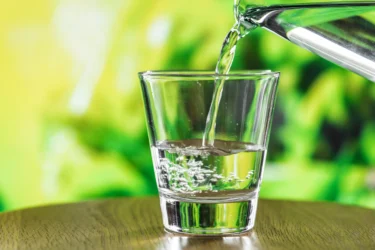
Typhoid fever may cause vomiting and diarrhoea that might lead to severe dehydration. To prevent dehydration, keep sipping on safe and healthy fluids[3]. Staying hydrated also helps in the timely elimination of waste materials and toxins from the body. Apart from water, have fruit juices, coconut water, and soups.
ORS is the best solution to combat the dehydration caused by typhoid fever. Ensure that you have WHO-recommended ORS. You can even make it at home by mixing sugar and salt in a litre of boiled water.

To combat high fever, sponging with lukewarm water can help reduce the temperature and be a supportive method in addition to fever-lowering medicines like paracetamol. You can sponge off armpits, feet, groin, and hands. Sponging on the extremities brings down the fever most effectively.
You can also soak a washcloth in water, squeeze out the excess water and place it on your forehead. Change the washcloth frequently.
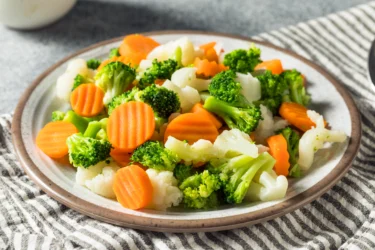
Consume easy-to-digest foods[6]. Cut down on fried and spicy foods. Avoid raw salad and fruits that cannot be peeled. You should consult your doctor about the meal plan depending on your condition.
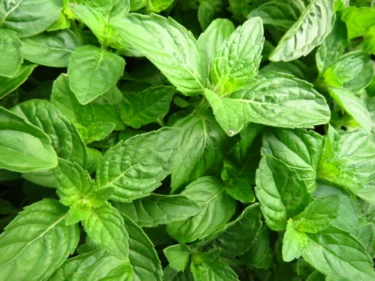
Basil is loaded with antibiotic and antimicrobial properties. Add basil to boiled water and drink three to four cups daily. Basil boosts immunity and calms the tummy[7].
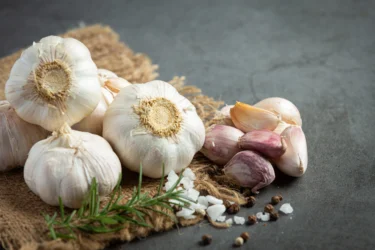
The antimicrobial properties present in garlic may speed up the recovery from typhoid due to its antioxidative properties [5].
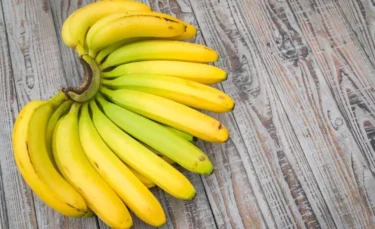
Bananas have pectin, a soluble fibre that helps the intestines absorb fluids, thus beneficial during diarrhoea. Potassium in the fruit helps in replacing the electrolytes lost through loose motions. It is one of the best things to eat when having typhoid[9].
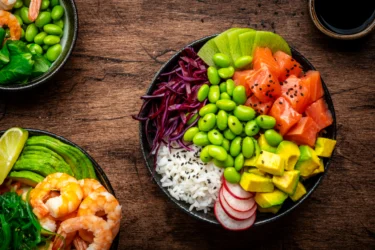
Consume small amounts of easy-to-digest food at frequent intervals.
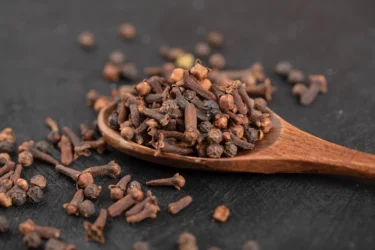
Cloves fight against bacteria that cause typhoid. The essential oils in cloves have antibacterial properties. It also reduces nausea and vomiting caused by typhoid. Boil water with cloves, strain in a cup and have a small amount of it[7].
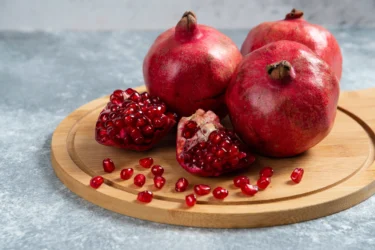
Pomegranates are an effective home remedy against typhoid. It helps in preventing dehydration. Have it as pomegranate juice for the ease of digestion[8].

Buttermilk is loaded with probiotics which not only improves gut health but also helps support the immune system. Additionally, it helps to break proteins down, which can aid in the recovery process after your fever has passed. This is one of the home remedies for typhoid that you should use towards the end of your fever.

Typhoid fever is often associated with weakness and fatigue. It is vital to take adequate rest to support recovery.
Consult a doctor and use the home remedies for a speedy recovery. With proper rest, light food, clean water, and prescribed medicines, the patients usually recover well.
Also Read: Typhoid Vaccine: What is It, Types, When to Be Taken & Side Effects
Also Read: Influenza B: What is It, Causes, Symptoms, Treatment & Prevention
Recovering from typhoid takes time, a lot of care, and the right approach. These simple home remedies along with your medical treatment can help you feel better faster. Every small effort counts, whether it’s staying hydrated, eating nutrient-rich foods, or getting enough rest. Always consult a doctor before trying new remedies.
Also Read: Home Remedies for Jaundice By Dr. Siddharth Gupta
Foods that should be avoided by someone suffering from typhoid fever are raw vegetables like broccoli, cauliflower, cabbage, dry fruits,raw berries, pineapple, nuts like almonds, pistachios, walnuts and seeds like pumpkin seeds, flax seeds, chia seeds.
In order to prevent typhoid fever you must drink clean water, keep your surroundings clean and practise good hygiene like wash your hands frequently[1], use alcohol-based sanitizers, avoid drinking untreated water, clean raw fruits and vegetables[1], eat hot foods and get vaccinated.
With proper treatment, the symptoms of typhoid fever should improve within 3-5 days but recovery can take around 1-2 weeks. The course of prescribed medicines should not be discontinued in between. If typhoid fever isn’t treated, it can get worse and there is a significant risk of life-threatening complications.
Disclaimer: The information provided here is for educational/awareness purposes only and is not intended to be a substitute for medical treatment by a healthcare professional and should not be relied upon to diagnose or treat any medical condition. The reader should consult a registered medical practitioner to determine the appropriateness of the information and before consuming any medication. PharmEasy does not provide any guarantee or warranty (express or implied) regarding the accuracy, adequacy, completeness, legality, reliability or usefulness of the information; and disclaims any liability arising thereof.